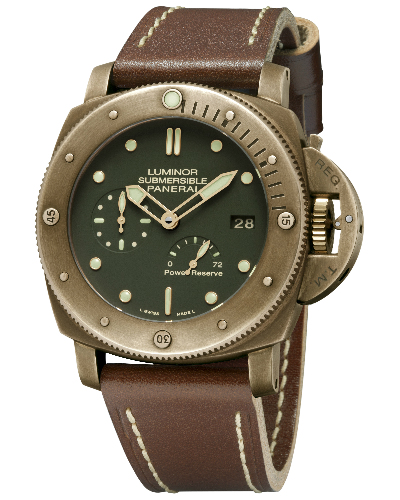Cultural Perspectives • 19 Jul 2016
A Penchant For Patina – Why Tarnished Watches Are So Counter-Intuitively Popular
Arguably, the trend started even before the late Gerald Genta created the first luxury watch made from bronze in 1988. It is a material that, over time, forms a dull, protective oxidised layer and is better known for its hardy maritime applications than for its propriety in shiny, blingy wrist jewellery.
And not by intention either. When Rolex, the ultimate maker of the tool watch – so-called because of its destiny strapped onto the sinewy forearms of divers, speedsters and James Bond – decided to make its products more readable at night, it turned to a material called tritium that is white in daylight but glows green in the dark.
The longevity of these superbly made watches meant that many early Rolexes survive to the modern day. But not without first acquiring battle scars, some of which are rather common due to the way the pieces were manufactured. The tritium lume, for example, will turn into various shades of brown. The black dials, too, tend to fade to brown.
Strangely enough, connoisseurs gravitate towards these flaws. A vintage Rolex refurbished with LumiNova hands and markers or a new dial immediately loses its value. There is nothing quite like this elsewhere in the collectors’ market: a concours-quality Jaguar E-type, for example, is most surely worth more than a rusty heap freshly discovered in a barn.
The reasons for this curious penchant are myriad. Some collectors love the fact that it took decades of ageing for the watch to become that way – perhaps while imagining that they are somehow inheriting the machismo of its previous wearers. Others find comfort in a familiarity, like a favourite pair of boxer shorts with an elastic band that has long given way but is just so comfortable. Yet there are a further few who derive a certain snob value out of owning a piece with history, something that new money cannot buy simply strolling into a boutique.

Over time, the bronze case and bezel of the Panerai Luminor Submersible 1950 will develop a patina as it reacts to air, humidity, heat and wear, rendering each watch unique to its owner.
So it is with bronze watches. The most famous is Panerai’s Luminor Submersible 1950 3 Days Power Reserve Automatic Bronzo of 2013. It is joined this year by Tudor’s Heritage Black Bay Bronze. Both give buyers a reassuring sense of “interactive” ownership, in the sense that the timepiece will age with you – sort of like a pair of jeans that you grow into. Quite literally too. As part of the patination process, the metal alloy will absorb salt from their perspiration to create the oxidised layer.

The use of brushed aluminium bronze alloy in the Heritage Black Bay Bronze guarantees the development of a subtle and unique patina.
And unlike the Rolexes of old, if for some reason you do not like the patina, you can – without losing value – polish it all off with Brasso.
For more information, please schedule an appointment with our Sales Consultant here.











